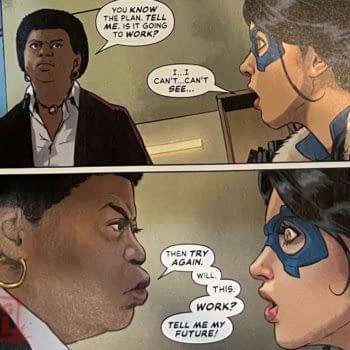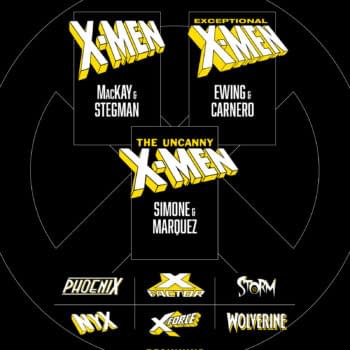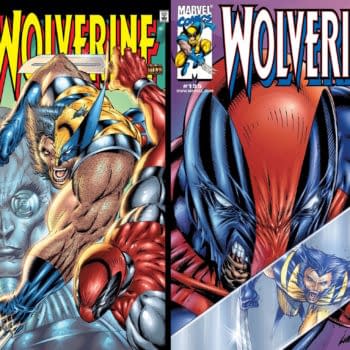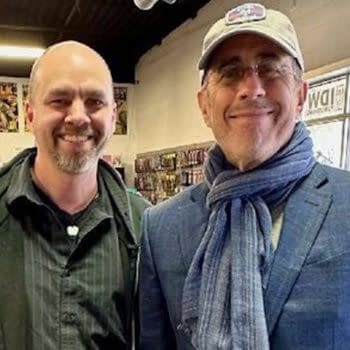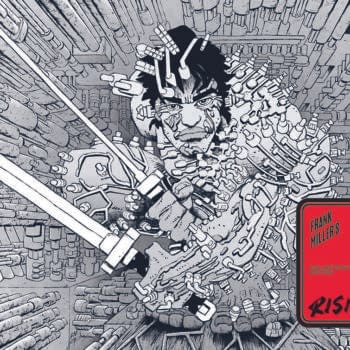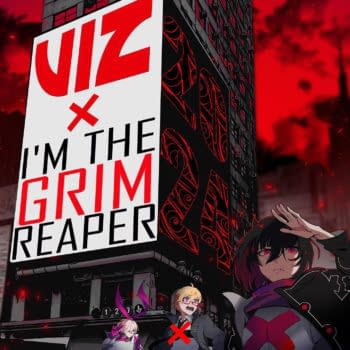Posted in: Comics, Recent Updates | Tagged: Carrye Kay Syma, Graphic Novels and Comics in the Classroom, Robert G. Weiner
There's A New Resource For Bringing Comics To Colleges – The Bleeding Cool Interview With Carrye Kay Syma and Robert G. Weiner
Over the summer of 2013, editors Carrye Kay Syma and Robert G. Weiner produced a new volume of comics scholarship through McFarland Press which joined a very slim selection of books that are geared toward addressing theory and use of comics in an educational environment. There are more resources now than there have ever been before to support the growth of comics as an academic subject at universities, and by relation, university libraries, but this really is only the beginning phase of producing resources for educators. Syma and Weiner's book Graphic Novels and Comics in the Classroom, features contributors who are known comics scholars and librarians currently crusading to raise awareness about comics in educational environments, from Carol L. Tilley to Christina L. Blanch, James Bucky Carter, Christina C. Angel and many more.
The collection of essays in the book range by subject topics including the "significance" of comics over time, teaching comics in the classroom, going "beyond the text", a focus on specific graphic novels and how to use them effectively, and lastly a study of the "cultural implications" of comics. The book presents a significant vista and an excellent starting point for conversation in higher education about the "why" of studying comics, but also the "how" for those who are new or just want to compare notes and learn from the experience of others.
Syma and Weiner answered a few questions for us here at Bleeding Cool about their motivations in putting the book together and their experiences with comics in education so far.
Hannah Means-Shannon: What do you think the biggest challenges are right now for educators who want to use comics in the classroom? Are those different from the challenges they faced five years ago?
Carrye Kay Syma: I think one of the biggest challenges is that comics and graphic novels are legitimate educational tools. This is still a challenge left from five years ago, however, with the publication of books like ours, educators are able to see the value in graphic novels and comics and they are gaining in popularity.
Robert G. Weiner: One of the biggest challenges I suppose is keeping up with all the great material that is being produced now. I know there is still some resistance to using comics in the classroom as a legitimate form, but hopefully with books like ours and many of the others being produced that is changing. Perhaps a better question is not why should you use comics, but what comics should you use? While educational related comics have been with use for many years, the last decade has seen an explosion in educational related sequential art publishing. Educators have to make informed decisions about what will suit their classes and their students. Like anything else comics using comics in the classroom is a process of trial and error. Some students will take it to right away while others will need to be worked with in more depth. Hopefully, with the print and online publishing explosion of educational related comics there should be something for every student and educator from elementary through higher education.
HMS: Can you tell us a little about the courses you've taught using comics? What kind of subject areas are best suited to comics texts?

RGW: As Carrye mentioned, we created a mini information literacy graphic novel for our Introduction to Library Research course which was pretty successful. We hope to someday take it further and maybe design a textbook for information literacy using the sequential art form. I also occasionally teach evening honors courses (HONR 1304) on the superhero in film history, and popular culture and zombies in film, literature, sequential art, and popular culture where I use graphic novel component for both courses. I have students read Craig Yoe's Zombies: The Chilling Archives of Horror for the zombie culture class. Students get a real kick out of it and their eyes opened to unique interpretations of zombies from those 1950s pre-code zombie tales. For the superhero class, I have them read The Killing Joke, X-Men: Dark Phoenix and Marvels (among others). I think it's important students understand graphic novels/comics can be used to convey something about the time they were written as a kind of social history.
HMS: What kind of responses do you get from faculty and administration when trying to set up courses or discussing your interests? Do you find resistance or negative attitudes that affect your career?
CKS: The response of our supervisor when we told her we wanted to include a graphic novel component in our class was go for it! She was very supportive.

Yes, our supervisor was very supportive of our idea (thank you Laura)!
HMS: What universities are strong in teaching using comics right now? Why do you think some are stronger than others in this are?
RGW: Oddly, this question has just come up on the COMIXSCHOLARS- list (so thanks to them for some of this information). I know my former stomping ground University of North Texas has a number of comic related courses including my friend Elizabeth Figa's Graphic Novels and Comics for Library Services. Dr. Carol Tilley (who is also a great scholar and a contributor to the book) also teaches a number of Library Science related courses at University of Illinois at Urbana-Champaign that tie into comics and graphic novels.

Courses are popping up all over the world in universities and colleges that are using a graphic novel or two. I think that the important thing is to get not only faculty buy in, but administrative buy in as well. Getting a job in the comics industry can be difficult and to teach comics studies is also very specialized (at least it seems to be right now). However, students do want to take comic related classes so there is a demand for them just like there is a demand for film and video game related courses (or anything related to popular culture). These courses may not always be practical say like accounting or web design, but students want to take them (which in turn means $$ for the university or college).
More and more students are writing papers related to graphic narratives and culture. We are seeing thesis and dissertations being written that have comic related content. Sequential art theory is a hot topic right now among some academics so naturally they would want to teach this. It's ingrained as part of our visual communication history and culture.
HMS: Can you tell us about your own background in pop culture and how you came to approach comics as a scholarly subject?
CKS: One word: Rob! Rob is very enthusiastic about graphic novels, comics and pop culture. Rob introduced the idea of incorporating them in our class and the student responses were overwhelmingly positive! Teaching the material in a different format was also a lot of fun and challenging.

Using comics as a scholarly subject just came naturally to me and when I was working as a public librarian I started reading the scholarly literature. While I was working on my reference book Marvel Graphic Novels book, I wrote a few articles and of course that translated even better when I became an academic librarian which was always my goal.
I've always wanted to answer the question: What does popular culture tell us about the times?
HMS: What was response like when you reached out for contributors for your new book? How large is the community of educators seeking to use comics in teaching?
CKS: The response was great and overwhelmingly positive. The community of educators seeking to use comics in teaching is growing every day.
HMS: How are university libraries currently handling the publication of comics scholarship? How do you propose they should be handled to reach researchers and educators in need of materials?

There are great archives at Michigan State, Ohio State, and Bowling Green and new collections are springing up all the time. However, today more and more scholars expect digital access of some kind. Libraries can also help via consortiums and interlibrary loan/document delivery which I use extensively. Because of the wide access to information and media hitting us all the time in a wide variety of ways, it is sometimes harder to reach the people you need too so the librarian is the scholars best friend.
HMS: Rob, you have personally edited a large number of books about comics and other pop culture areas. Why is producing volumes of comics scholarship so important to you?

HMS: Carrye, How do you think using comics in academic relates to other media fields? Do you think they should be classified as "literature" or take their place alongside visual media subjects in universities?
CKS: I believe they should be classified as both. They are too important and valuable to different fields to be relegated to just one.

Robert G. Weiner is the editor of a whole raft of scholarly books about comics and popular culture (most recently Web-Spinning Heroics: Critical Essays on the History and Meaning of Spider-Man) and is associate humanities librarian at Texas Tech University. His essays have also appeared in the Journal of Popular Culture, Journal of American Culture, and the International Journal of Comic Art, to name a few.
Photo courtesy of Amy Kim, Texas Tech Libraries.
Hannah Means-Shannon is Senior New York Correspondent at Bleeding Cool, writes and blogs about comics for TRIP CITY and Sequart.org, and is currently working on books about Neil Gaiman and Alan Moore for Sequart. She is @hannahmenzies on Twitter and hannahmenziesblog on WordPress. Find her bio here.











